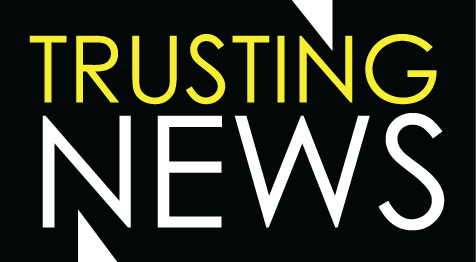Reporting process
Grand News Source guiding principles
WITF box explaining late election results
Tennessean fact-checks local TV station
Fulcrum Voter FAQ
FiveThirtyEight’s disclaimer about polls
CPR’s guide for covering 2020 elections
News Tribune note about election coverage
Deseret News explains anonymous sources policy
WCPO explains coverage decisions
Trust Tip #83: Create an FAQ about your elections coverage
Trust Tip 82: If your coverage is nonpartisan, explain and defend that
Trust Tip 81: Help your audience consume polls responsibly
Wirecutter explains removing outdated information
Trust Tip 74: Explain why a story is being done and encourage audience participation
Coloradoan explains bias toward facts
Community Impact Newspaper explains reporting process
Trust Tip 73: Learn how people perceive your election reporting
Florida Today explains validity of SpaceX photo
News 5 Cleveland explains why station doesn’t report scanner traffic
News 5 Cleveland explains breaking news policy
ProPublica explains decision behind publishing graphic video
PolitiFact explains fact-checking process
WCPO responds to viewer complains on air
Philadelphia inquirer owns up to headline mistake
AJC explains approach to covering big story
AJC explains reporting process, context
WJXT4 explains reporting process, mission
Trust Tip #71: Acknowledge what you don’t know
Philadelphia Inquirer explains newsroom processes
KPRC explains breaking news policy
Trust Tip 68: Do not neglect basic but vital pandemic information
WLNS reporting on suicide
ProPublica transparency around fair news
Trust Tips 67: Demonstrate visual balance in political coverage
Atlanta Journal-Constitution on covering legislature
Tennessean editorial board describes decision process
Atlanta Journal-Constitution on covering Georgia’s Legislature
WCPO cuts back use of mugshots
Tamp Bay Times how this story was reported
SF Chronicle reporting process explainer
SF Chronicle explain your process boxes, columns
Trust Tip 64: Disclose stimulus funds and explain the ethics involved
WCPO explains how their COVID-19 coverage different from competitors
WJXT4 explains beach visuals during COVID-19 aren’t altered
Milwaukee Journal Sentinel explains visuals aren’t altered
San Fransisco Chronicle uses explain your process boxes
Malheur Enterprise explains reporting process
Salem Reporter explains reporting process
PA Post explains story selection process
Levittown Now explains reporting process
The Oklahoman explains reporting process, story selection
The Echo addresses possible conflict of interest
Colorado Sun uses credibility indicators to increase transparency
Trust Tips 62: Tell your audience that COVID-19 information might change
NYTimes explains breaking news during coronavirus pandemic
NPR’s developing story disclaimer
Cronkite Student Media gives users behind-the-scenes look
Trust Tip 61: Do these four things right now to show you are trustworthy
Atlanta Journal Constitution explains COVID-19 coverage
Atlanta Journal Constitution shares approach to coronavirus coverage
Bozeman Chronicle explains changes during COVID-19 outbreak
WPCO adapts coverage, production during coronavirus outbreak
Atlanta Journal Constitution explains how coverage adapting during coronavirus outbreak
WCPO share goals, mission surrounding coronavirus coverage
San Fransisco Chronicle talks to subscribers about covering Coronavirus
Coloradoan explains Coronavirus reporting approach
WCPO explains reporting process during Coronavirus pandemic
WCPO explains changes to newsgathering with coronavirus
WMAR explains Coronavirus reporting process, asks for feedback
WEWS explains Coronavirus coverage
NPR adds ownership disclosure
Caller-Times shares mission, goals, process
Trust Tip 46: Build transparency into investigative pieces
KPCC/LAIST ‘How we’re reporting on this’
Science News newsroom process
Annenberg Media’s full disclosure series explains newsroom processes
The State shares guide when reporting on suicide
WCPO explains its coverage of presidential candidates
Caller Times labels opinion, watchdog content
Trust Tip 39: Use plain English in your disclosure statements
Trust Tip 33: If you get something wrong, explain yourself
Trust Tip 32: Transparency sidebars can be quick and easy

